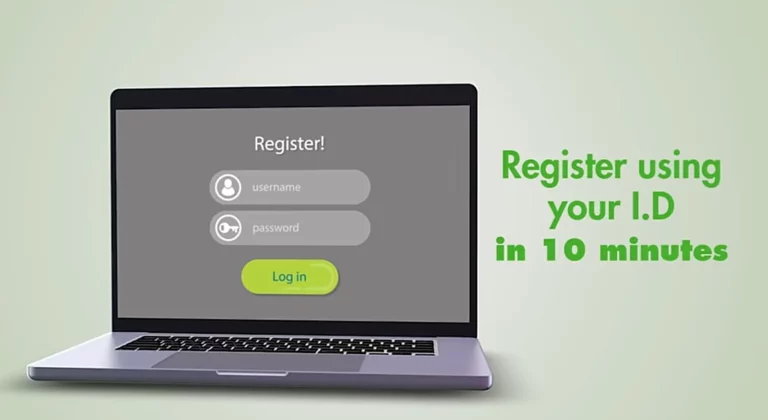Starting a small lending business can be an exciting venture, but let’s face it: getting the capital to kickstart your operations is often the biggest hurdle.
I’ve been there, staring at my business plan and wondering, “How do I get a loan for a small lending business?”
It’s a question that keeps many aspiring entrepreneurs up at night.
But here’s the good news: securing funding for your lending business isn’t impossible.
In fact, with the right approach, it’s entirely achievable.
In this post, I’m going to walk you through the exact steps I used to fund my own lending business.
We’ll cover everything from what you need to prepare, to step-by-step instructions on securing that crucial funding.
I’ll also share some insider tips, common pitfalls to avoid, and how to troubleshoot when things don’t go as planned.
By the end of this article, you’ll have a clear roadmap on how to get a loan for a small lending business and turn your financial dreams into reality.
Let’s dive in.
What You’ll Need

Before we jump into the nitty-gritty of securing funding, let’s talk about what you need to have in your arsenal.
Think of this as your funding toolkit – the essentials that will make your journey smoother and increase your chances of success.
Essential Documents and Preparations
Business Plan: This is your roadmap and your pitch all in one. It needs to be:
- Comprehensive
- Well-researched
- Professionally presented
Financial Projections: Lenders want to see the numbers. Prepare:
- Cash flow forecasts
- Profit and loss statements
- Balance sheets
Personal Financial Statement: Your own financial health matters. Include:
- Assets
- Liabilities
- Income sources
Business Registration Documents: Prove you’re legit with:
- LLC or corporation paperwork
- Business licenses
- Tax ID numbers
Credit Reports: Both personal and business (if applicable)
Financial Requirements
Now, let’s talk money. The financial requirements can vary, but here’s a general idea:
- Minimum Credit Score: Aim for 680+
- Down Payment: Typically 10-30% of the loan amount
- Collateral: Assets to secure the loan (could be personal or business)
- Cash Reserves: 3-6 months of operating expenses
Legal Considerations
Don’t overlook the legal side of things. You’ll need:
- Compliance Documentation: Proof that you understand and will adhere to lending regulations
- Insurance Policies: Protect your business and assets
- Contracts and Agreements: For partnerships, employees, or service providers
Top Tools for Preparation:
- LivePlan: For creating professional business plans
- QuickBooks: For financial projections and accounting
- Credit Karma: For monitoring your credit score
Having these elements in place isn’t just about ticking boxes.
It’s about demonstrating to potential lenders or investors that you’re serious, prepared, and a good risk.
Remember, in the world of lending, trust is currency.
The more you can do to build that trust upfront, the better your chances of securing the funding you need.
Step-by-Step Instructions To Secure Funding for Your Small Lending Business

Alright, now that we’ve got our ducks in a row, let’s dive into the meat of the matter.
Here’s your step-by-step guide on how to get a loan for a small lending business.
Follow these steps, and you’ll be well on your way to securing that crucial funding.
1. Research Funding Options
First things first, you need to know what’s out there. Here are your main options:
Traditional Bank Loans:
- Pros: Lower interest rates, longer terms
- Cons: Strict requirements, lengthy approval process
SBA Loans:
- Pros: Government-backed, favorable terms
- Cons: Complex application, can be slow
Online Lenders:
- Pros: Fast approval, flexible requirements
- Cons: Higher interest rates, shorter terms
Angel Investors:
- Pros: Potential mentorship, no debt
- Cons: Give up equity, potential loss of control
Venture Capital:
- Pros: Large funding amounts, business expertise
- Cons: High expectations, significant equity loss
Action Step: Create a spreadsheet comparing these options based on your specific needs and qualifications.
2. Prepare Your Business Plan
Your business plan is your secret weapon. Here’s how to make it shine:
- Executive Summary: Craft a compelling snapshot of your business
- Market Analysis: Show you understand your industry and competition
- Business Model: Explain how you’ll make money
- Financial Projections: Be realistic but ambitious
- Team Bios: Highlight your expertise and experience
Pro Tip: Have someone in the finance industry review your plan. Their insights can be invaluable.
3. Build Your Credit Score
Your credit score can make or break your funding chances. Here’s how to boost it:
- Check your credit report for errors
- Pay down existing debt
- Keep credit utilization below 30%
- Don’t close old credit accounts
- Make all payments on time
Tool Recommendation: Use Credit Sesame to monitor and improve your credit score.
4. Network and Find Potential Investors
It’s not just what you know, it’s who you know. Here’s how to expand your network:
- Attend industry events and conferences
- Join entrepreneur groups on LinkedIn and Facebook
- Participate in local business associations
- Leverage alumni networks
- Consider working with a business broker
Action Step: Set a goal to make 5 new relevant connections each week.
5. Apply for Loans or Seek Investors
Now it’s time to put yourself out there. Here’s how:
For Loans:
- Gather all necessary documents
- Submit applications to multiple lenders
- Be prepared for follow-up questions
For Investors:
- Craft a compelling pitch deck
- Practice your pitch relentlessly
- Be ready to answer tough questions
Pro Tip: Don’t just focus on the money. Look for lenders or investors who can add value beyond capital.
6. Negotiate Terms and Close the Deal
You’ve got interest – great! Now let’s seal the deal:
- Review all terms carefully
- Don’t be afraid to negotiate
- Seek legal advice before signing anything
- Be clear on all obligations and expectations
- Have a plan for how you’ll use the funds
Remember: The best deal isn’t always the one with the most money. Consider all aspects, including terms, support, and alignment with your vision.
If you follow these steps, you’re not just increasing your chances of getting funded.
You’re setting yourself up for long-term success in your lending business.
Each step builds on the last, creating a solid foundation for your venture.
Stay focused, be persistent, and don’t be afraid to ask for help when you need it.
Tips To Successfully Secure Funding for Your Small Lending Business

Securing funding for your small lending business is more than just following a set of steps.
It’s about positioning yourself and your business in the best possible light.
Here are some insider tips that can give you an edge in your funding journey.
Building Credibility
Your credibility is your most valuable asset when seeking funding. Here’s how to boost it:
Develop a Strong Online Presence:
- Create a professional website
- Maintain active, industry-focused social media accounts
- Publish thought leadership content
Showcase Your Expertise:
- Speak at industry events
- Contribute articles to respected publications
- Offer free workshops or webinars in your area of expertise
Build Strategic Partnerships:
- Collaborate with complementary businesses
- Secure endorsements from respected industry figures
- Join industry associations and actively participate
Demonstrate Traction:
- If possible, start small and show growth
- Collect and showcase positive client testimonials
- Highlight any early successes or milestones
Pro Tip: Create a “credibility kit” – a document that showcases your expertise, experience, and early wins. Share this with potential lenders or investors.
Technology is Your Friend
Now, technology can be a game-changer. Here’s how to use it to your advantage:
Use Fintech Tools:
- Implement cutting-edge lending software
- Utilize AI for risk assessment
- Offer mobile-friendly applications
Embrace Data Analytics:
- Use big data to refine your lending criteria
- Implement predictive modeling for risk management
- Showcase your data-driven approach to potential funders
Streamline Operations:
- Automate repetitive tasks
- Use project management tools for efficiency
- Implement a robust CRM system
Tool Recommendations:
- Lending Software: Jisort, Mambu or Turnkey Lender
- Data Analytics: Tableau or Power BI
- CRM: Salesforce or HubSpot
Diversifying Funding Sources
Don’t put all your eggs in one basket. Here’s how to diversify:
Explore Alternative Funding:
- Consider crowdfunding platforms
- Look into peer-to-peer lending
- Investigate revenue-based financing
Leverage Government Programs:
- Research SBA loan programs
- Look for state-specific small business grants
- Explore tax incentives for small businesses
Create a Funding Mix:
- Combine different types of funding (e.g., loans + equity)
- Consider bringing on multiple smaller investors instead of one large one
- Look into convertible notes as a flexible funding option
Remember: Each funding source comes with its own pros and cons. Always do your due diligence and consider the long-term implications.
By implementing these tips, you’re not just increasing your chances of securing funding.
You’re building a stronger, more resilient business that’s better positioned for long-term success.
These strategies go beyond just getting a loan for a small lending business – they set you up as a credible, tech-savvy, and financially savvy entrepreneur.
And those are qualities that will serve you well long after you’ve secured your initial funding.
Common Mistakes to Avoid

In my years of experience in the lending industry, I’ve seen countless entrepreneurs stumble on their path to funding.
Let’s talk about some of the most common pitfalls and how you can sidestep them.
Underestimating Capital Needs
This is probably the most frequent mistake I see. Here’s why it’s dangerous:
Running out of cash too soon:
- Leads to operational issues
- Can damage your credibility with lenders
Needing to seek additional funding quickly:
- Often results in less favorable terms
- Can dilute your ownership if you turn to equity funding
Inability to capitalize on growth opportunities:
- Limits your ability to scale
- Can lead to losing market share to competitors
How to Avoid It:
- Overestimate your needs: Add a 20-30% buffer to your projections
- Plan for best and worst-case scenarios: Have contingency plans for both
- Consider phased funding: Secure commitments for future rounds based on milestones
Neglecting Due Diligence
In the excitement of starting your business, it’s easy to overlook crucial details. Don’t fall into this trap:
Failing to thoroughly research the market:
- Can lead to unrealistic projections
- Might miss crucial regulatory requirements
Not vetting potential partners or investors:
- Can result in misaligned expectations
- Might lead to conflicts down the road
Overlooking legal and regulatory requirements:
- Can result in costly fines or legal issues
- Might damage your reputation in the industry
How to Avoid It:
- Conduct thorough market research: Use tools like IBIS World or Statista
- Vet all partners and investors: Check their track record and speak to others they’ve worked with
- Consult with legal and compliance experts: Ensure you’re meeting all regulatory requirements
Overextending Financially
It’s tempting to go all-in, but overextending can be fatal for your business:
Taking on too much debt:
- Can lead to cash flow issues
- Might limit future borrowing capacity
Giving away too much equity too soon:
- Can limit your control over the business
- Might reduce your long-term earning potential
Neglecting personal financial health:
- Can lead to stress and poor decision-making
- Might force you to make short-term decisions that hurt the business long-term
How to Avoid It:
- Maintain a healthy debt-to-equity ratio: Aim for 1:1 or lower
- Value your equity highly: Don’t give away more than necessary in early rounds
- Pay yourself a reasonable salary: Ensure your personal finances are stable
Remember, avoiding these mistakes isn’t just about getting a loan for a small lending business.
It’s about setting yourself up for long-term success and sustainability.
Being aware of these common pitfalls and actively working to avoid them, you’re already ahead of the game.
You’re not just building a business; you’re building a strong foundation for future growth and success.
Troubleshooting Issues You Might Encounter

Even with the best preparation, things don’t always go according to plan.
Let’s talk about some common roadblocks you might encounter and how to navigate them.
Dealing with Rejection
Rejection is part of the process. Here’s how to handle it:
Don’t take it personally:
- Remember, it’s a business decision, not a personal one
- Use it as a learning opportunity
Ask for feedback:
- Understand why you were rejected
- Use this information to improve your pitch or business plan
Keep your options open:
- Don’t put all your hopes on one lender or investor
- Always have a backup plan
Action Step: Create a “rejection journal” where you log feedback and lessons learned from each rejection.
Adapting Your Strategy
If your current approach isn’t working, it’s time to pivot:
Reassess your funding needs:
- Can you start smaller?
- Are there aspects of your business you can bootstrap?
Explore alternative funding sources:
- Consider non-traditional options like revenue-based financing
- Look into industry-specific grants or programs
Refine your pitch:
- Focus on what makes your business unique
- Emphasize your team’s strengths and experience
Pro Tip: Consider joining a startup accelerator program. They often provide funding, mentorship, and valuable connections.
Seeking Professional Help
Sometimes, you need to call in the experts:
Financial Advisors:
- Can help optimize your financial projections
- Might have connections in the lending industry
Legal Counsel:
- Ensures you’re compliant with all regulations
- Can review and negotiate funding agreements
Business Mentors:
- Provide valuable industry insights
- Can often make introductions to potential funders
Tool Recommendation: Use platforms like SCORE or MicroMentor to find experienced business mentors for free.
Remember, troubleshooting is not a sign of failure – it’s a normal part of the entrepreneurial journey.
The key is to stay flexible, learn from setbacks, and keep moving forward.
Every challenge you overcome makes you and your business stronger and more resilient.
Final Thoughts
We’ve covered a lot of ground in our journey to secure funding for your small lending business.
From understanding what you need to prepare, to step-by-step instructions on securing funding, to tips for success and common pitfalls to avoid – you now have a comprehensive roadmap to guide you.
Remember, getting a loan for a small lending business is not just about the money.
It’s about building a foundation for a sustainable, profitable venture that can make a real impact in the financial world.
Let’s recap some key points:
- Preparation is crucial: Having your documents, financials, and legal considerations in order sets you up for success.
- Know your options: From traditional bank loans to angel investors, understanding the pros and cons of each funding source is essential.
- Build credibility: Your reputation and expertise are your most valuable assets when seeking funding.
- Leverage technology: Embracing fintech and data analytics can give you a competitive edge.
- Avoid common pitfalls: Being aware of mistakes like underestimating capital needs or neglecting due diligence can save you from major headaches down the road.
- Be resilient: Rejections are part of the process. Learn from them and adapt your strategy as needed.
Remember, every successful lending business started somewhere.
With persistence, smart planning, and the right approach, you can join their ranks.
Your journey to secure funding might be challenging, but it’s also an opportunity to refine your business model, build valuable relationships, and prove your entrepreneurial mettle.
So, take that first step.
Start putting together your business plan, researching your options, and building your network.
The world of small business lending is ripe with opportunity, and with the knowledge you’ve gained from this guide, you’re well-equipped to seize it.
Your future in the lending industry starts now.
Go make it happen.
FAQ Section
Q1: How much money do I need to start a small lending business?
A1: The amount can vary widely depending on your business model and target market. Generally, you should aim for at least $50,000 to $100,000 in initial capital. This covers startup costs, operating expenses, and your first loans. Remember to factor in a buffer for unexpected expenses.
Q2: What credit score do I need to get a loan for my lending business?
A2: Most lenders prefer a credit score of 680 or higher for business loans. However, some alternative lenders may consider lower scores if other aspects of your application are strong. Always work on improving your credit score to increase your chances of approval and better terms.
Q3: Can I start a lending business with no money?
A3: While it’s extremely challenging to start a lending business with no money, it’s not impossible. You might consider starting very small with personal funds, then reinvesting profits. Alternatively, you could explore partnerships or seek investors who bring capital to the table. However, having some initial capital is highly recommended.
Q4: How long does it take to get approved for a business loan?
A4: The timeline can vary significantly depending on the lender and type of loan. Traditional bank loans might take 60-90 days for approval. SBA loans can take 60-120 days. Online lenders are often faster, with some offering approval in as little as 24 hours. Always factor in additional time for gathering documents and negotiating terms.
Q5: What’s the difference between secured and unsecured loans for my lending business?
A5: Secured loans require collateral (like property or equipment) that the lender can claim if you default. These often have lower interest rates but put your assets at risk. Unsecured loans don’t require collateral but typically have higher interest rates and may be harder to qualify for, especially for new businesses.
Remember, while these FAQs provide general guidance, it’s always best to consult with financial and legal professionals for advice tailored to your specific situation. The lending industry is heavily regulated, and requirements can vary by location and business model.
Read also:




